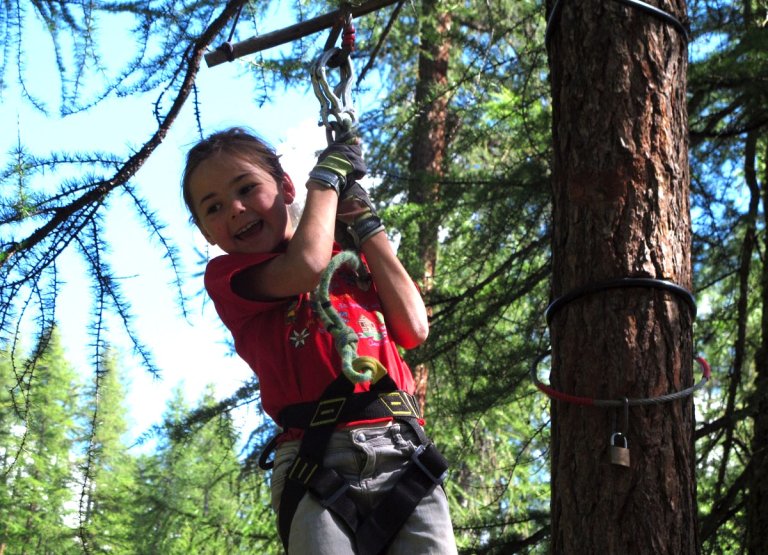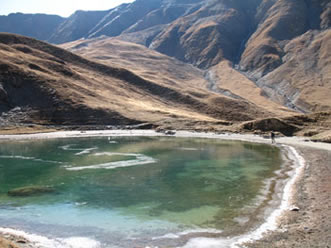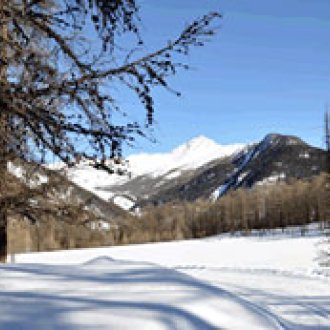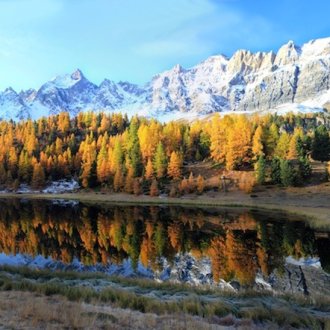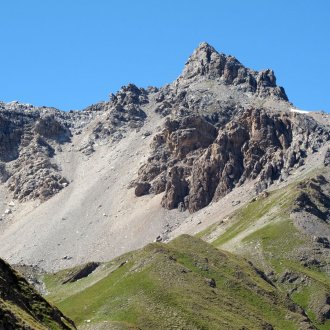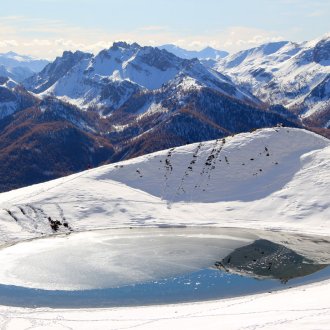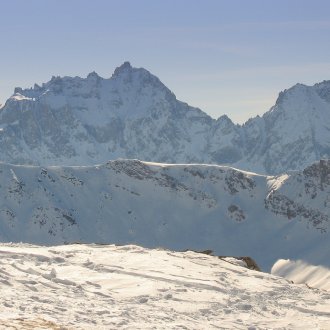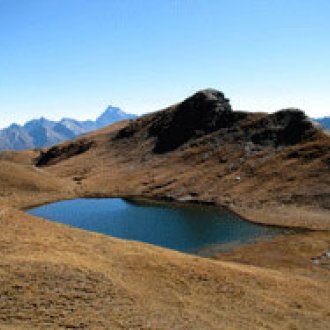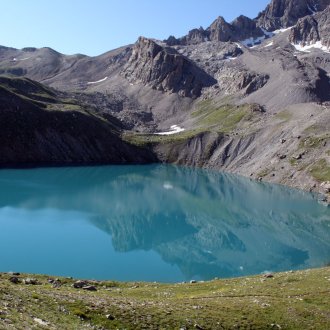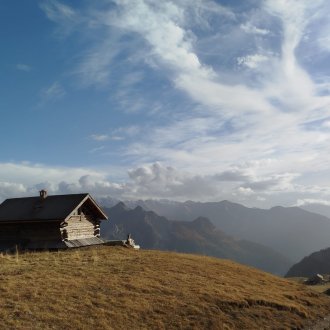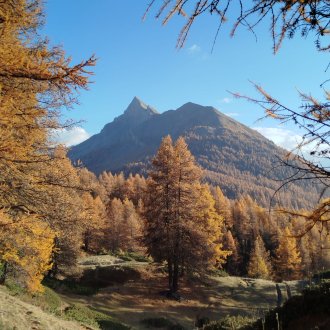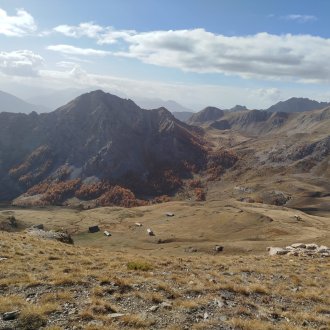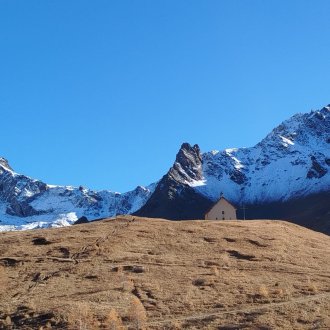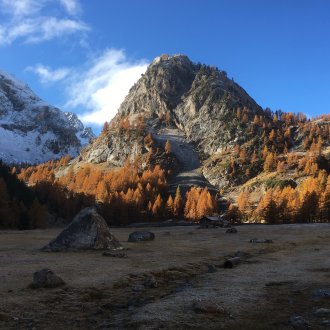
Queyras - Mountain country
There are 28 mountains of over three thousand metres in the Queyras
Summary
- A massif of the Hautes Alpes
- A long struggle against the mountains
- A protected mountain region
- Outdoor activities
A massif of the Hautes Alpes
The Queyras is an area in the Cottian range of the southern Alps. It is situated in the extreme east of the department of the Hautes-Alpes and on the border with Italy.
It comprises the basin of the river Guil, a left-bank tributary of the Durance, and it has four valleys (see the Panorama of the Queyras) :
- the Guil, with its villages (moving in order downstream) of Ristolas, Abriès, Aiguilles-en-Queyras and Château-Ville-Vieille,
- the Izoard or Arvieux valley, sloping down from the Col of the same name, with the village of Arvieux,
- tthe valleys of Aigues, Aigue Blanche and Aigue Agnelle, with Saint-Véran, the highest commune in Europe, and the village of Molines-en-Queyras,
- he valley of the Cristillan with the village of Ceillac.
The highest mountain in the Queyras is the Pic de la Font-Sancte (3385 m) above Ceillac, on the edge of the Alpes-de-Haute-Provence. Then come the Pic de Rochebrune(3325 m) above Arvieux and the Bric-Froid (3302m) above Abriès. The Pain de sucre (Sugar-Loaf) and the Pic d'Asti above Ristolas, along with the Tête des Toillies above Saint-Véran, are all between 3175 and 3208m in height.
There are more than twenty lakes, in the Queyras, and above 2500m the water is exceptionally pure. Some are in a very grentle, welcoming setting, others are more forbidding. All are within hiking distance, like Lac de Clausis at Ceillac or Lac de Souliers at Château-Ville-Vieille.
The Queyras region buts up against Mont Viso (3841 m) the highest mountain in the southern Alps, with its summit in Italy. The Guil, and its big Italian brother, the Po, both rise on the flanks of Viso. Draining the waters of this massif, the Guil flows out of the Queyras towards the western Hautes-Alpes, breaching a limestone barrier and then being funnelled into impressive gorges along the road down to Guillestre. This is the only route that remains open in winter. The other two routes into the region, from Briançon (Hautes-Alpes) by the Col d'Izoard (2361 m) to Arvieux, and from Italy by the Col Agnel (2744 m) to Molines-en-Queyras, are closed by snow from November to May.
A long struggle against the mountains
The history of the Queyras is one of a long struggle against the mountains: against avalanches that crush houses and forests, against drought in summer, and the devastating flash-floods of mountain torrents which regularly sweep away paths, bridges and walkways. For many years communications between the Queyras and the town of Guillestre took the form of paths along the steep sides of gorges - their remains can still be seen.
For these reasons, Queyras people found it easier to trade with other regions by going over mountain passes such as Col Garnier (2279 m) from Arvieux to Guillestre, the Col des Ayes (2477 m) from Arvieux to Briançon (still in the Hautes Alpes at 2299m), Col Lacroix (2299 m) from Ristolas to Val Pellice in Italy, or Col Girardin (2706 m) from Ceillac towards l'Ubaye and Barcelonnette in the Alpes-de-Haute-Provence.
The opening of roads over the Col d'Izoard above Arvieux, towards Briançon, and the Col Agnel above Molines-en-Queyras, towards Italy, have since opened up the Queyras.
A protected mountain region
The isolation of the Queyras has helped to preserve its rural character and shield it from the effects of industrialisation. Nowadays it is a unique region in the Hautes-Alpes and the southern Alps in general, owing to the beauty of its high mountain landscapes, its geology, the richness of its mountain flora (orchids in particular) and the variety of its wildlife, which the Queyras Regional Natural Park strives to protect, at the same time as it supports normal human activity. The Queyras has kept its traditions longer than other regions; and out of all the communes, it is perhaps Arvieux which has best preserved its customs, because it was cut off until 1897 when the Col d'Izoard road was opened.
Outdoor activities
Long treks either on foot or on skis, are the most popular activity in this protected natural landscape. There is great variety - mountain lakes to visit, passes and summits to climb. You can tailor your outdoor activity to your strength and skills. Downhill skiing, canyoning, snow-shoeing, ice-climbing, via ferrata and treetop obstacle courses – these are all ways to get close to nature.
Land of emotion, land of tradition, land where nature’s richness has been preserved, the Queyras is also a place for holidaying in the mountains. With the development of tourism it has opened up its houses, transformed its vaulted barns, and refurbished its haylofts to welcome holidaymakers. Queyrassins have constructed ski-lifts, financing the first ones with their own money, so that their guests can go skiing in village-size resorts where waiting-times are short.
There are 28 mountains in the Queyras
above 3,000 m
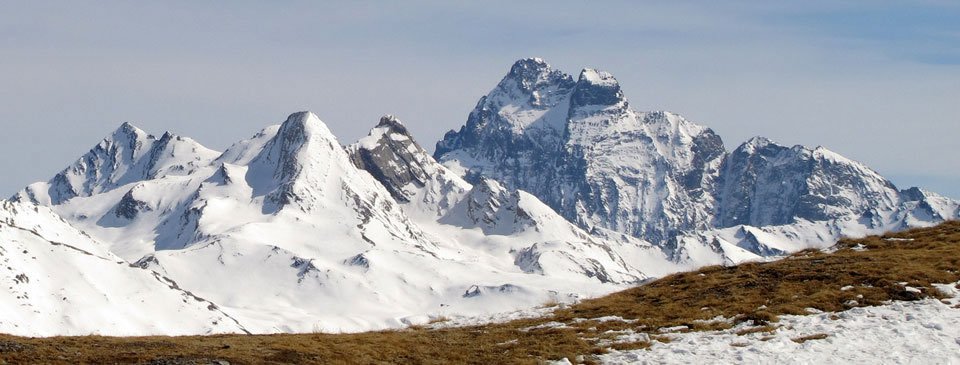
A mountain range in the Hautes Alpes
Of all the regions in the Hautes Alpes, Queyras is the highest. Its average altitude is close to 2,000 m, and 60% of its inhabitants live above 1,600 m.
Its sunny climate means that the village of Saint-Véran, Europe's highest commune, is located at an altitude of 2,040 m. The Queyras is a mountain range in the Southern Alps, located at the eastern end of the Hautes Alpes department on the border with Italy.
It comprises the Guil basin, a left-bank tributary of the Durance, with its four valleys (see Queyras panorama):
- du Guil, with the villages of Ristolas, Abriès, Aiguilles-en-Queyras and Château-Ville-Vieille,
- d'Izoard, which descends from the pass of the same name, with the village of Arvieux,
- aigues, Aigue Blanche and Aigue Agnelle, with Saint-Véran, Europe's highest commune, and the village of Molines-en-Queyras,
- cristillan, with the village of Ceillac.
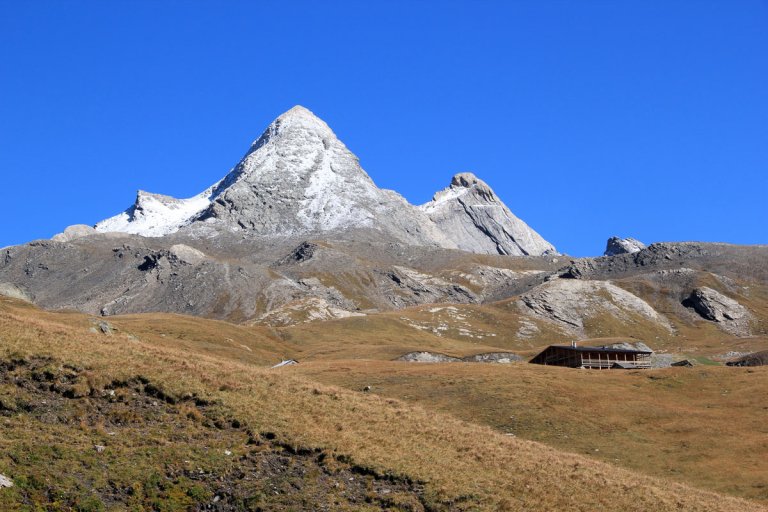
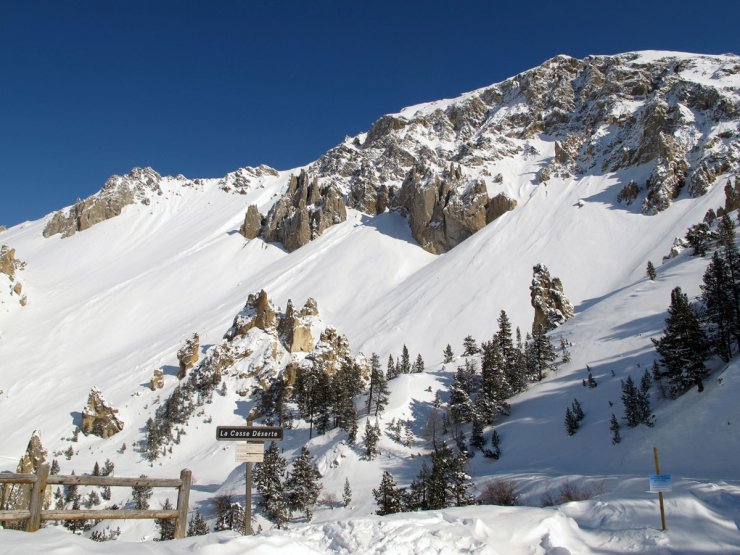
It boasts no fewer than 28 mountains over 3000 m. The highest mountain in the Queyras is the Pic de la Font-Sancte (3385 m) at Ceillac, on the border with the Alpes de Haute Provence. It is followed by the Pic de Rochebrune (3325 m) at Arvieux and the Bric-Froid (3302 m) at Abriès. The Pain de sucre at Ristolas, the Pic d'Asti also at Ristolas and the Tête des Toillies at Saint-Véran are mountains that rise from 3175 to 3208 m.
The Queyras has more than twenty lakes, scattered throughout the mountains, with waters of great purity at altitudes above 2,500 m. Some are very inviting, others more sombre. All are hiking destinations, like Lac de Clausis in Ceillac or Lac de Souliers in Château-Ville-Vieille.
The Queyras region backs onto Mont Viso (3841 m), the highest mountain in the Southern Alps. Like its big brother, the Po, the Guil rises from here. The summit of Mount Viso is in Italy.
After collecting the waters of the massif, the Guil escapes from the Queyras to the west, heading for the Hautes Alpes, crossing the limestone bar that locks it into the impressive gorges along the road to Guillestre. This is the only road open in winter. The other two access routes, from Briançon (Hautes Alpes) via the Col d'Izoard (2361 m) at Arvieux and from Italy via the Col Agnel (2744 m) at Molines-en-Queyras, are closed from November to May, depending on snow conditions.
A long struggle against the mountain
The history of the Queyras is that of a long struggle against the mountain, against its avalanches that destroy forests and houses, against its summer droughts, against its torrents whose devastating floods never cease to wash away paths, bridges and footbridges.
For a long time, Queyras and Guillestre in the Hautes Alpes were linked by footpaths over the gorges, the dizzying remains of which can still be seen clinging to the cliffs.
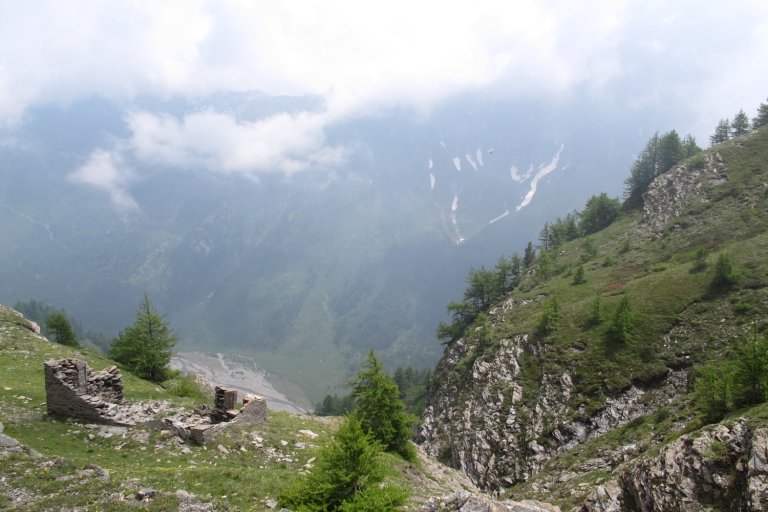
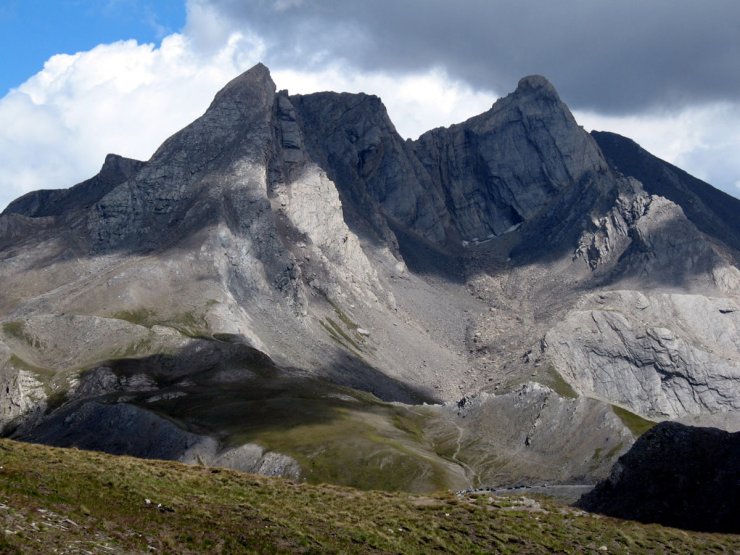
As a result, the Queyras was able to trade more easily with the outside world via passes such as the Col Garnier (2279 m) at Arvieux to Guillestre in the Hautes Alpes, the Col des Ayes (2477 m) at Arvieux to Briançon (Hautes Alpes), the Col Lacroix (2299 m) at Ristolas to Val Pellice in Italy, and the Col Girardin (2706 m) at Ceillac to Ubaye and Barcelonnette in the Alpes de Haute Provence.
The opening of roads over the Col d'Izoard at Arvieux to Briançon and the Col Agnel at Molines-en-Queyras to Italy, has opened up the Queyras.
A land of emotion, a land of traditions, a land where nature has preserved its richness, the Queyras is also, in the Hautes Alpes, a land of welcome for mountain vacations. With the development of tourism, it has opened its houses, transformed its vaulted cowsheds and fitted out its windows to welcome holidaymakers.
Its inhabitants were keen to build ski lifts, financing the first ones out of their own pockets, so as to enable their guests to ski in their village resorts, which remain human in scale to this day, where waits at the lift are limited and the pleasure constant.
A preserved mountain
These difficulties of access have had the effect of preserving the Queyras' rural character and protecting it from the effects of industrialization. Today, it is a unique territory in the Hautes Alpes, and more generally in the Southern Alps, for the beauty of its high-mountain landscapes, its geology, the richness of its mountain flora, especially its orchids, and the abundance of its fauna, all of which the Queyras Regional Nature Park aims to protect without becoming an obstacle to human activity.
As a result, it has preserved its traditions longer than other regions, and of all its communes, it is perhaps Arvieux, which remained off the beaten track until 1897, when the present road was opened via the Col d'Izoard, that has best preserved its own.
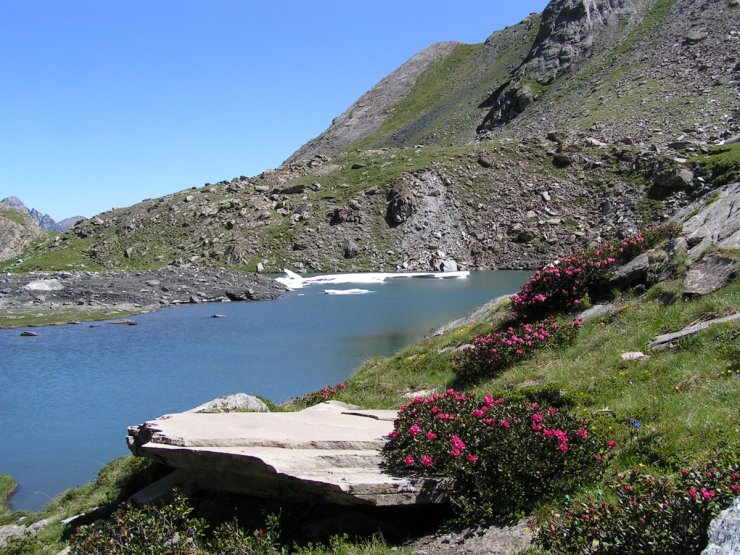
Unspoilt nature
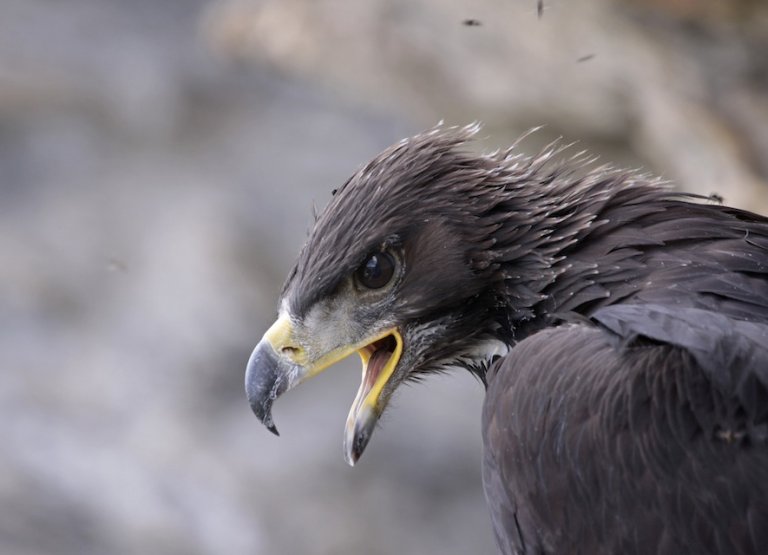
Separated from Italy by high passes and from the rest of the Hautes Alpes department by the Guil gorges (the present road was only built in 1855), Queyras has long been an isolated rural territory whose flora and fauna have been remarkably well preserved.
Chamois, mouflons and marmots delight young and old alike, while it's not uncommon to see an eagle circling high in the sky or a griffon vulture no doubt from the Drôme, one of the Hautes Alpes' neighbouring departments. The rich flora is an inexhaustible spectacle when summer comes and the mountains are decked out in a thousand colors. The complex geology of the Queyras fascinates specialists and the curious alike.
Outdoor activities
In this unspoilt environment, mountain hiking is king, whether on foot or on skis.
The destinations are varied: passes, mountain lakes, summits. With the GR 58 Tour du Queyras, more than thirty lakes, twenty passes and as many mountains to climb, some of which exceed 3000 m, the Queyras offers an almost infinite variety of walks and hikes at all levels.
Downhill skiing, cross-country skiing, mountain biking, canyoning, snowshoeing, ice climbing, via ferrata and accrobranche are just some of the ways to immerse yourself in nature.
